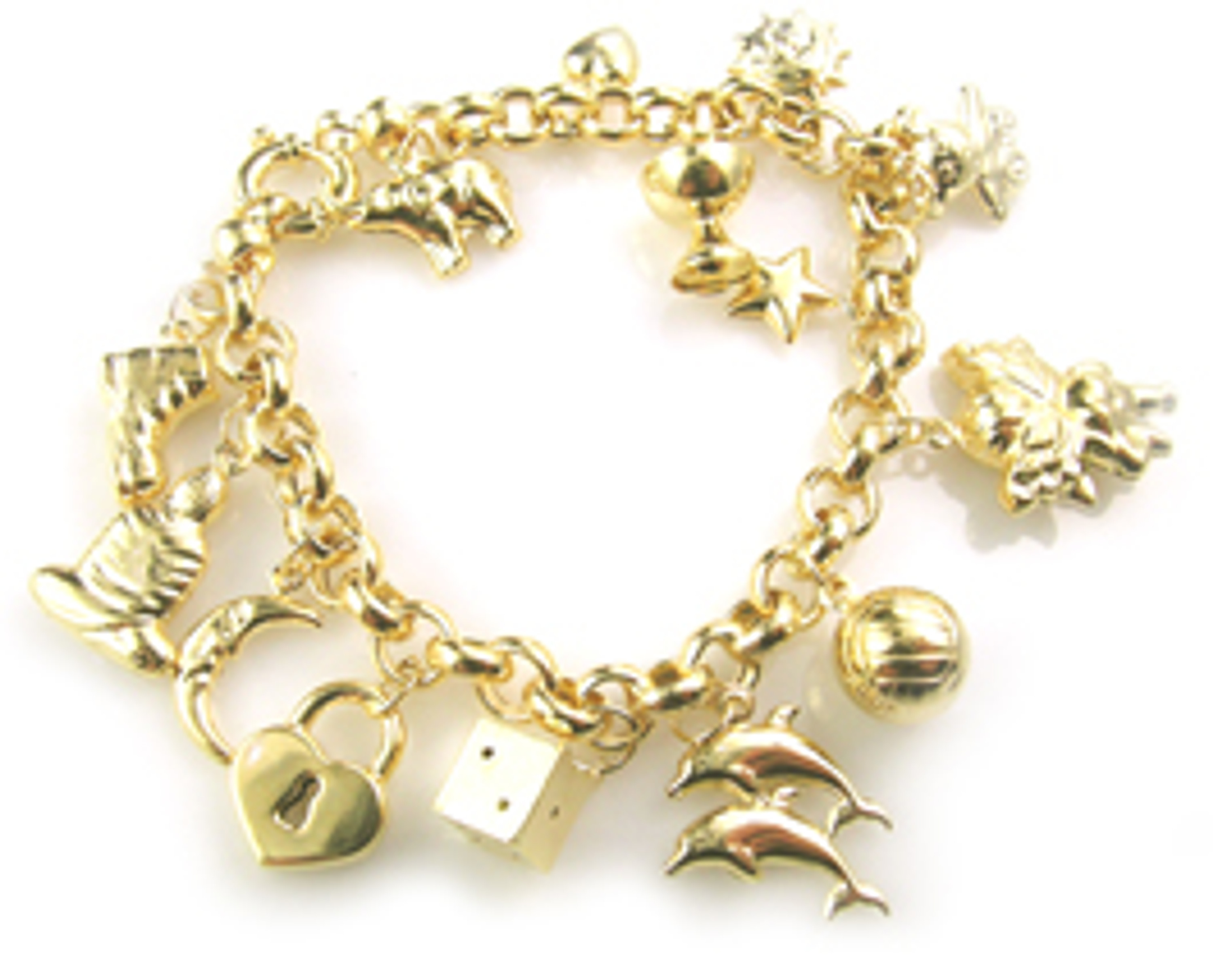Charm Themes for Bracelets
Dec 14th 2018
It is thought that the origin of charm bracelets has to do with warding off evil spirits and offering good luck.
While currently not particularly trendy, charm bracelets have been around for centuries, and CAN become collectors’ items. All it will take for them to come back into fashion is for a celebrity to be seen wearing a charm bracelet. That’s exactly what happened in the 19th century when Queen Victoria of England started the fashion in Europe, and when screen superstar, Elizabeth Taylor and Joan Crawford started a later craze during the mid 20th century.
Irrespective of the century, the idea has a lot of charm…
If you have a daughter, or a young female relative, there can be no more special gift than an item of gold jewelry. By opting for a bracelet that can accommodate charms, you can continue the charm bracelet theme for years. For instance every birthday you can give a new charm, until eventually your chosen princess has an amazing and very unique item of jewelry.
Many linked chain bracelets are suitable for charms, although you might need an additional link to fix the charm to the bracelet. And there are so many amazing charms available you can carry on giving her special gifts for years and years.
So what about charm themes?
Animals are a favorite, and even specific animals can become a theme. For instance horses: you can buy all sorts of different horse charms as well as horseshoes and other charms related to riding.
Crosses are another favorite, and here there is a load of choice from plain to quite flamboyant. Signs of the zodiac are another… and hearts yet another.
If you are uninspired, your theme for a gold charm bracelet could be as simple as buying gold charms for your daughter every birthday – or silver charms if you have opted for a sterling silver bracelet. One thing that is for sure, she’s going to love it!



